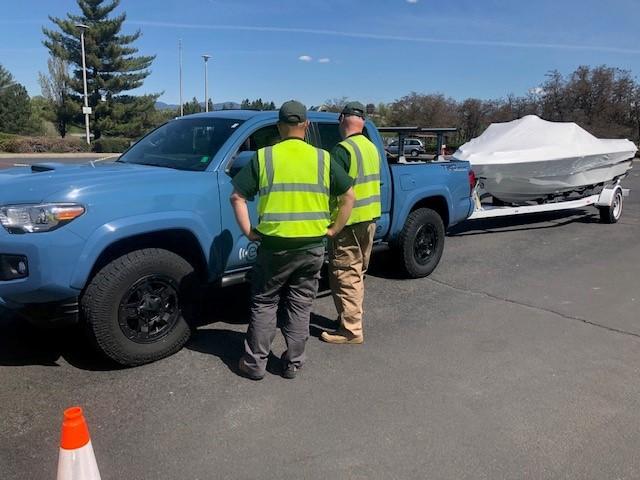Photos
Click to display full size or right-click to save to your device.
ARCHIVED NEWS RELEASE
This document is provided for archival purposes only. Archived documents
do not reflect current WDFW regulations or policy and may contain factual
inaccuracies.
News release May 4, 2023
Staci Lehman, Communications, (509) 710-4511
SPOKANE – Having already experienced hot weather this spring, the boating season is officially underway in Washington state. To keep lakes, rivers, and other water bodies clean and beautiful, the Washington Department of Fish and Wildlife (WDFW) is asking the public to take a few simple steps when launching boats or other vessels this season.
WDFW is the lead agency for statewide management of invasive species; non-native plants and animals that can spread quickly and cause economic or environmental harm. Zebra and quagga mussels are some of the aquatic invasive species of greatest concern. They clog pipes and mechanical systems of industrial plants, dams, water systems, utilities, locks, and hatcheries.
WDFW’s Enforcement Program leads a watercraft inspection program focused on preventing aquatic invasive species from entering Washington waterways. In 2022, staff at WDFW watercraft check stations inspected nearly 52,000 vessels for aquatic invasive species, intercepting 871 boats carrying aquatic noxious weeds and other unwanted invasive species that pose a risk to the state’s waters.
“Invasive mussels haven’t taken hold in Washington yet, and the Columbia River is the last major United States river that has not been impacted. But, it only takes one boat to ruin that,” said Captain Eric Anderson, WDFW aquatic invasive species enforcement program lead. “Efforts by WDFW and partners including irrigators, public utilities, and the boating industry have been successful in preventing the spread of these species to Washington to date.”
To keep these and other unwanted species from making a home in Washington, drivers are required by law to stop at one of WDFW’s four watercraft check stations when transporting a watercraft if it’s on the road they are travelling. All vessels, from powerboats to kayaks and paddleboards, must be checked. It takes just a few minutes for an exterior boat check, and invasive mussel-sniffing dog Fin can do it even faster if he is on duty.
Watercraft check stations are clearly posted and located on Interstate 90 near the Washington/Idaho border (Fin’s home station) and near Cle Elum. There is one on U.S. 395 near the Tri Cities, and another near the Port of Clarkston. Answers to frequently asked questions about watercraft inspections and an inspection request form are available online.
In addition to checking watercraft before going into the water, WDFW asks you to clean, drain, and dry your craft after removing it from the water. Clean all equipment (waders, life vests, boat hulls and engines, trailers, and other gear) by removing plants, algae or mud. Drain accumulated water back into the waterbody from which it came. Rinse all surfaces with potable water and let boats and gear fully dry before using again.
“Cleaning your boat, kayak or other watercraft now could mean less money spent later to eradicate invasive species that take hold,” said Justin Bush, executive coordinator for the Washington Invasive Species Council. “If we prevent them from establishing in Washington, then they won’t harm our native fish, restrict our recreation, or damage our shipping, hydropower, flood control and irrigation industries.”
For more information on aquatic invasive species in Washington, visit the WDFW website. For more information on all Washington invasive species, visit InvasiveSpecies.wa.gov.
